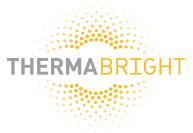Know the Cold Sore Stages | Stop a Cold Sore
Know the cold sore stages to stop a cold sore before it appears.
During the life of a cold sore outbreak, which typically lasts around two weeks, your cold sore will go through five different stages. Each stage is unique and the outbreak can be less severe and shortened significantly, by following the right do’s and don’ts for cold sores and their stages. Lets get started:
Stage 1: The Tingle.
The tingle, otherwise known as the Prodrome stage, is when symptoms first make themselves known. Once you are aware of symptoms, it is even more important than normal to avoid sharing liquids or coming into close contact with others. The area will begin to get warm and painful, with an itching or tingling sensation being associated. This might last a few hours or a full day, and the skin may feel as though it’s tightening. The area will become red and swollen because of the inflammation caused by the upcoming infection. This is the stage where, if you use InterceptCS™ cold sore prevention, you will eliminate the virus and completely prevent the cold sore from appearing and shorten the time you will have to deal it.
Stage 2: Blisters
The Macule, or Blister Stage, is when you can first start to see the cold sore appearing. This is a type of hypersensitivity or allergic reaction that occurs in response to the virus. They will appear as a group of small, painful lumps that may increase and grow. As your body tries to fight the infection, white blood cells rush to the blister. When this is happening, the blister is filled with millions of virus cells, which is why it’s important not to try to pop it during this stage. One of the more debilitating affects of popping a cold sore during this stage is that it could possibly lead to a cold sore in the eye. This stage can last about 2-4 days.
Stage 3: Ulcer
This is one of the most unpleasant part of the cold sore’s journey, the Ulcer Stage. It typically lasts around a day and is the most painful. During this stage, the blister will burst and a shallow ulcer, or open sore, will develop. There will also be a red ring of inflammation around the infected area. A scab will form over top of the open wound and lead us into the next stage.
Stage 4: Scabbing
After the blister has burst and the shallow ulcer appears, it’s time for the scabbing stage. This is when the infected area drys out and a crust appears, forming a scab. The scab will help the healing process, however while the scab heals, you may experience painful cracks that can bleed. There can also be severe itching and burning during this stage as well. Apply a milk swab to the scab to encourage healing. The scab stage can last 3 days.
Stage 5: Getting back to normal
When the scab comes off, the healing stage begins. There may be some residual dry flaking and swelling, but the pain will decrease and your skins appearance will start to return. The area can remain inflamed for a some time after the infection is over, but for the most part will be returning to it’s typical self.
Uncomfortable, painful, and long-lasting, no one likes a cold sore or canker sore outbreak. Each one can be less or more severe than the last with varying healing time as well. And while some may also not last as long, there is no doubt that anytime spend with a highly contagious and unsightly cold sore is not fun. But, by using InterceptCS™ during the Tingle stage, you can completely avoid the next cold sore outbreak! No painful swelling, nasty pus, or harmful medications. Simply use Intercept and your cold sore will go into recession.
So live comfortably knowing you can control your cold sore outbreaks, and get InterceptCS™ Cold Sore Prevention today!






Leave a Reply
Want to join the discussion?Feel free to contribute!